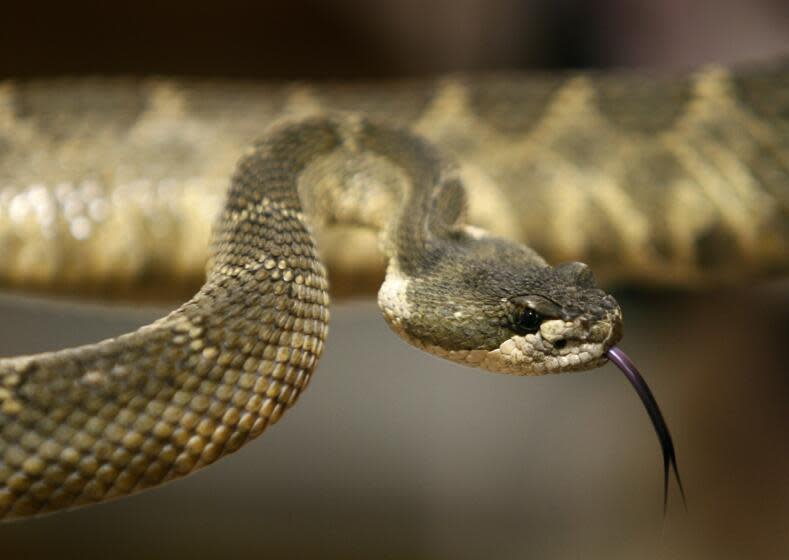He picked up a package and found a live rattlesnake inside: 'Do I have any enemies?'

It’s not every day that someone makes an attempt on your life. But Elijah Bowles believes that’s exactly what happened last week, when he picked up a package at the Twentynine Palms Post Office and found a live rattlesnake inside.
Someone had put cotton balls in the box so postal workers wouldn’t hear the snake's rattle, the 60-year-old truck driver said.
“That’s attempted murder, if you ask me,” he said.
Bowles picked up the package Thursday and asked a friend to open it as they drove away from the post office that serves the Mojave Desert town near Joshua Tree National Park.
“When she opened the box, she threw it at me almost,” he said. “And she says, ‘There’s a snake in there.’”
Bowles pulled over and put the box by the curb, then used a stick to open it. He estimates the snake was about 2 feet long. He called 911 and Animal Control.
Read more: Joshua Tree's celebrity rattlesnake wrangler wants to change how you see reptiles
Animal Control picked up the snake, and a San Bernardino County deputy took a report that was forwarded to the U.S. Postal Inspection Service, which is handling the investigation, the Sheriff’s Department said.
Patricia Mendoza, a postal inspector, said in an emailed statement that an investigation is ongoing.
The package, marked "fragile" in black marker, listed as a return address a home in Palm Coast, Fla., but tracking information indicates that it was mailed May 3 in Hayward, Calif.
“This is a first for me,” said Rick Boyd, the Animal Control supervisor for the city of Twentynine Palms, who responded to the incident. It was a Western rattlesnake, he said. The species, also known as the Northern Pacific rattlesnake, is common in Northern California but isn't usually found in Southern California.
Boyd said he doesn’t believe it's possible that the snake slithered into the package while it was in transit and noted that it appears to have been intentionally mailed.
Read more: Joshua Tree’s famed three-legged coyote Tripod is in danger of being loved to death
Assassination attempts by rattlesnake have precedent in Southern California.
In 1978, Los Angeles trial attorney Paul Morantz nearly died after he was bitten by a rattlesnake that someone had placed in his mailbox. Police arrested Charles Dederich, who led the Synanon paramilitary cult, against which Morantz had won a judgment, on suspicion of conspiracy to commit murder; they also arrested two of Dederich’s foot soldiers, known as Imperial Marines, on suspicion of attempted murder.
The preliminary hearing featured the snake, floating in formaldehyde, introduced as Exhibit 1. All three men pleaded no contest, avoiding trial.
While the Twentynine Palms incident may seem improbable, it is possible, according to local wildlife experts.
Rattlesnakes are resilient — they can survive for up to six months without food or water, as long as temperatures aren’t too extreme, said Danielle Wall, a snake wrangler who serves the high desert.
“It is 100% possible for a snake to survive in the mail like that, as long as they don’t overheat or freeze,” she said.
Bowles on Monday learned that a second, virtually identical package was recently mailed to his home in Florida. He has directed family members to take it to the police station rather than open it, he said.
“I’m trying to figure out, do I have any enemies?” he said.
“I’m not a gangster,” he added. “I’m a truck driver.”
This story originally appeared in Los Angeles Times.

